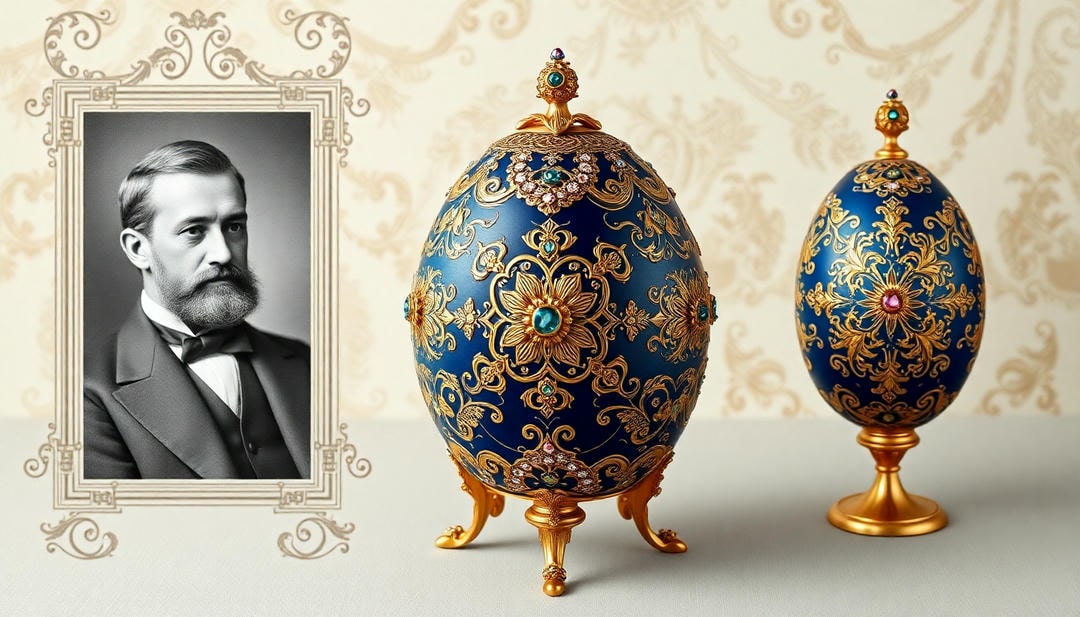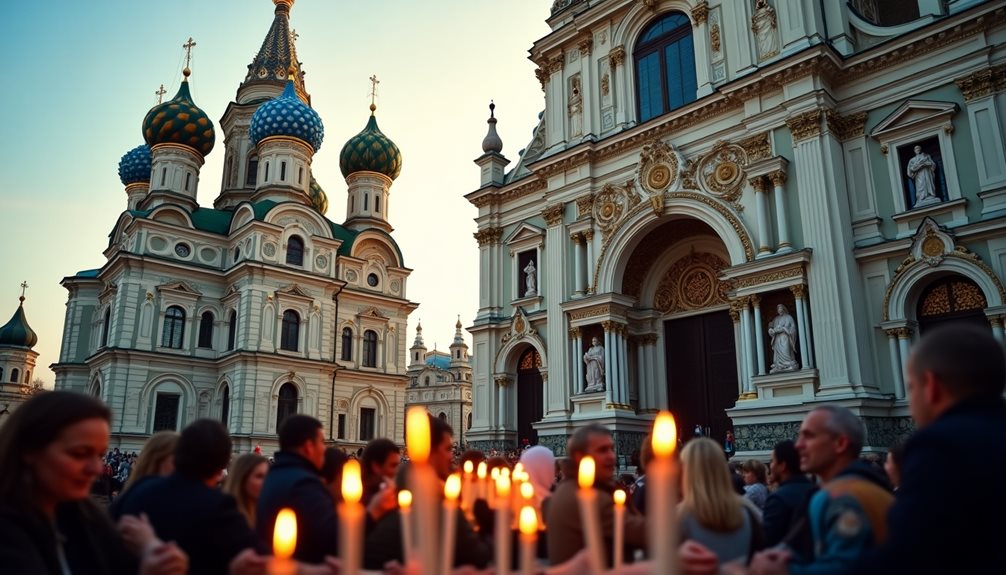Imagine standing before the towering Worker and Kolkhoz Woman statue in Moscow, a masterpiece of Soviet art that captures the spirit of an era. You find yourself curious about how Vera Mukhina’s vision came to life and what inspired its creation. Revealed at the 1937 Paris World’s Fair, this monument not only symbolized the aspirations of a nation but also utilized groundbreaking techniques. As you uncover the layers of its history, you might wonder about the extensive restoration efforts that have preserved its majesty. What stories does this iconic sculpture still hold within its steel and chrome?
Origins and Inspiration
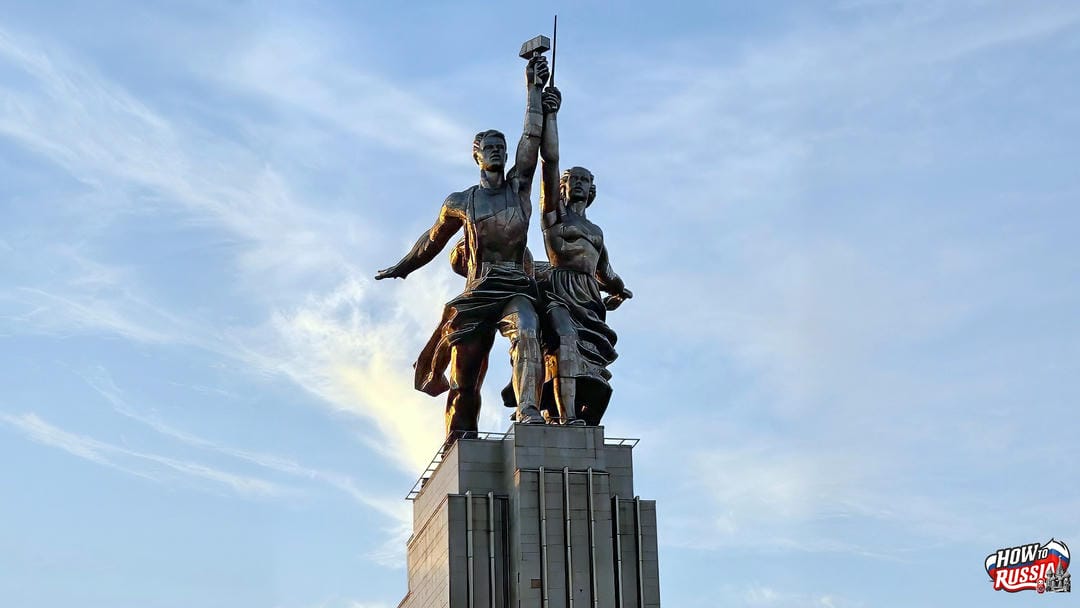
The origins of the Worker and Kolkhoz Woman statue are deeply rooted in the socio-political context of the Soviet Union during the 1930s, reflecting the ideological aspirations of the era. You’d find that this monumental sculpture embodies the core tenets of Soviet propaganda, emphasizing the collective strength and unity of the proletariat and peasantry.
Designed at a time when art was a tool for state ideology, the statue stands as a symbol of the transformative power of socialism, projecting an idealized vision of Soviet society.
Understanding the artistic influences, you’ll see how the statue draws from the avant-garde movements of the early 20th century while adhering to the principles of Socialist Realism. Its dynamic composition and monumental scale suggest the forward momentum and progressive ideals that the Soviet regime sought to propagate.
By examining these influences, you gain insight into how art was strategically employed to communicate political messages, shaping public perception and promoting a sense of collective destiny.
In this context, the statue wasn’t merely an artistic endeavor; it was a strategic instrument crafted to inspire and mobilize the masses towards the Soviet vision of a liberated future.
Design and Construction
Amidst the fervor of the 1930s Soviet Union, the design and construction of the Worker and Kolkhoz Woman statue became a demonstration to the era’s ambitious architectural and engineering feats. You can appreciate how Vera Mukhina, the visionary sculptor, encapsulated the spirit of unity through architectural elements that symbolized progress and industrial strength.
The statue’s dynamic posture, with the figures striding forward with a sickle and hammer, reflects a profound sense of motion and purpose, embodying the ideals of collective labor and societal advancement.
When considering the construction techniques, you’ll find that the statue’s assembly was as revolutionary as its design. Crafted using stainless steel, an innovative choice at the time, the sculptural form defied traditional stone and bronze mediums.
The utilization of aircraft industry welding methods guaranteed the lightweight yet resilient structure could withstand environmental elements. This technique also enabled the intricate detailing that gives the statue its lifelike presence.
Such methods not only highlight the technological advancements of the period but also resonate with the broader theme of innovation that defined the Soviet architectural landscape. Through these elements, the statue remains an enduring symbol of ambition and resilience.
Journey to Paris
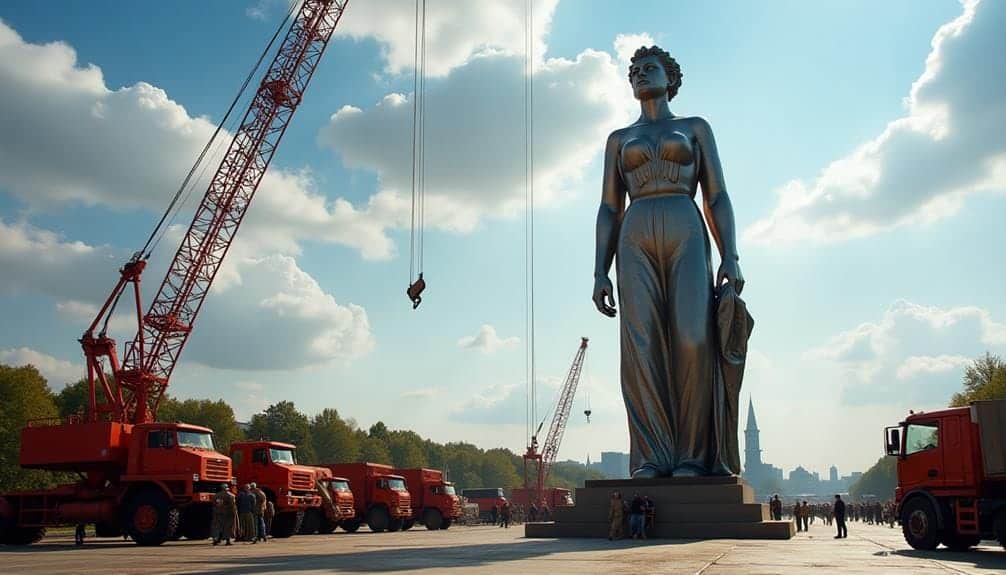
In a remarkable display of cultural diplomacy, the Worker and Kolkhoz Woman statue commenced its journey to Paris for the 1937 International Exposition. This colossal masterpiece, crafted by Vera Mukhina, wasn’t just an artistic endeavor but a strategic projection of Soviet influence on the global stage.
As you explore its voyage, consider the intricate logistics involved in transporting a 24.5-meter tall, 75-ton monument made of stainless steel. It required meticulous planning and ingenuity, encapsulating the Soviet commitment to showcasing their industrial talent.
The Paris Exhibition served as a pivotal platform for nations to assert their cultural and technological advancements. For the Soviet Union, this was an opportunity to counter Western narratives and display their ideological vision.
The Worker and Kolkhoz Woman stood as an emblem of collectivism, aiming to captivate the international audience with its grandeur and thematic significance.
As the statue reached Paris, it wasn’t merely a piece of art; it was a potent symbol of Soviet ambition and resilience. By examining its journey, you gain insight into how art can transcend borders, challenging perceptions and inviting discourse on freedom and power dynamics among nations.
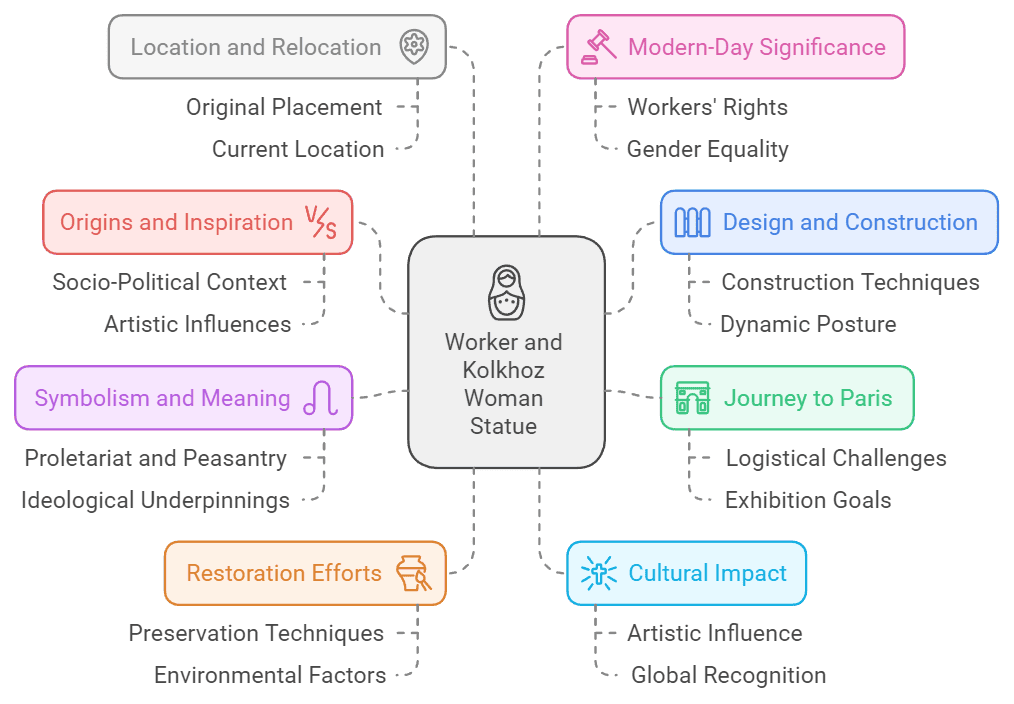
Symbolism and Meaning
Arriving in Paris, the Worker and Kolkhoz Woman statue instantly captured the attention of many, compelling viewers to contemplate its deeper significance. As a powerful embodiment of communist ideology, the statue brilliantly fuses artistic expression with political symbolism.
You can’t help but notice how the figures, a male worker and a female kolkhoz woman, stride forward with a determined gaze, holding their sickle and hammer aloft. This dynamic pose symbolizes the unity and strength of the proletariat and the peasantry, vital elements of Soviet philosophy.
The statue’s composition is more than mere artistic flair; it reflects the ideological underpinnings of its time. Crafted by Vera Mukhina, it was intended not only to represent the Soviet Union’s burgeoning power but also to inspire a sense of liberation among its people.
Restoration Efforts
While the Worker and Kolkhoz Woman statue stands as a symbol of Soviet ideology, its preservation has required significant restoration efforts over the years. The statue, crafted from stainless steel, faces numerous preservation challenges due to its exposure to harsh weather conditions and pollution.
You might find it intriguing that restoration techniques have evolved, focusing on maintaining the statue’s structural integrity while respecting its historical significance.
Restoration efforts in the late 20th and early 21st centuries highlighted the need for advanced methods. Technicians and historians collaborated to implement state-of-the-art restoration techniques, such as laser cleaning and precise welding, to address corrosion and structural weaknesses. These methods guaranteed that the statue’s imposing presence and ideological significance remained intact, honoring its creators’ vision.
However, preservation challenges remain, particularly the ongoing battle against environmental factors and the passage of time. Restoration teams have employed innovative strategies, including protective coatings and regular maintenance schedules, to mitigate these issues.
Yet, the continuous evolution of technology and materials science offers hope for more sustainable preservation solutions.
Ultimately, the restoration of the Worker and Kolkhoz Woman statue reflects a broader narrative of preserving cultural heritage—an endeavor that demands a balance between historical fidelity and modern innovation.
Cultural Impact
Though it may appear merely as a monumental piece of art, the Worker and Kolkhoz Woman statue holds profound cultural significance that extends beyond its physical presence. This iconic sculpture is a powerful cultural representation of the collective identity and aspirations of the era. Crafted by Vera Mukhina, the statue embodies the artistic influence of socialist realism, which sought to inspire and mobilize through art.
For you, understanding this statue’s impact requires delving into its role as a beacon of progress and unity, reflecting the societal values of its time.
When you consider its artistic influence, the statue transcends borders, inspiring countless works across various media. Its dynamic pose and aesthetic have influenced everything from films to modern sculptures, embedding itself into the global artistic consciousness.
The Worker and Kolkhoz Woman statue represents the universal human struggle for equality and empowerment. As a viewer, you’re invited to explore these layers of meaning, recognizing the statue as a tribute to the enduring power of cultural representation to shape, challenge, and expand your understanding of the world.
Location and Relocation
The Worker and Kolkhoz Woman statue’s cultural significance is closely tied to its physical presence and location, which have evolved over time. Originally created for the 1937 Paris World’s Fair, the statue was designed to embody Soviet ideals and showcase the nation’s industrial prowess. Its original placement was atop the Soviet pavilion, a strategic location that underscored the regime’s ambition and vision.
However, after the fair, the statue was transported back to Moscow, where its journey continued to reflect the shifting tides of political and cultural narratives. In Moscow, the statue was installed near the All-Russia Exhibition Centre, a decision that aligned with the Soviet intent to inspire and educate the masses.
Its towering presence symbolized a utopian future shaped by the collaboration of workers and farmers. However, time and environmental factors necessitated its relocation. In the early 2000s, it underwent extensive restoration and was relocated to a new pedestal at its current location, still near the exhibition center but elevated to greater prominence.
This move not only preserved the statue but also reinforced its enduring relevance in a world that continually grapples with the balance between heritage and progress.
Modern-Day Significance
Amidst the rapidly changing landscape of Moscow, the Worker and Kolkhoz Woman statue stands as a powerful symbol of its modern-day significance. This iconic sculpture transcends its Soviet origins, now serving as a beacon of social justice and equality.
As you observe the statue’s imposing figures, you’re reminded of the enduring struggle for workers’ rights and the central role of labor in shaping societies. In today’s context, it’s not just a relic of the past but a call to action, urging global audiences to reflect on the ongoing fight for fair labor conditions and gender equality.
The statue has achieved global recognition, not only as an artistic masterpiece but also as a cultural touchstone. It challenges you to contemplate the broader implications of historical narratives and their impact on contemporary issues.
As people’s awareness of social justice expands, the Worker and Kolkhoz Woman statue gains renewed relevance, inviting dialogue about the balance of power and the pursuit of freedom. By standing tall in Moscow, it acts as a reminder that the ideals of equality and justice are timeless, inspiring you to advocate for a more equitable world.


